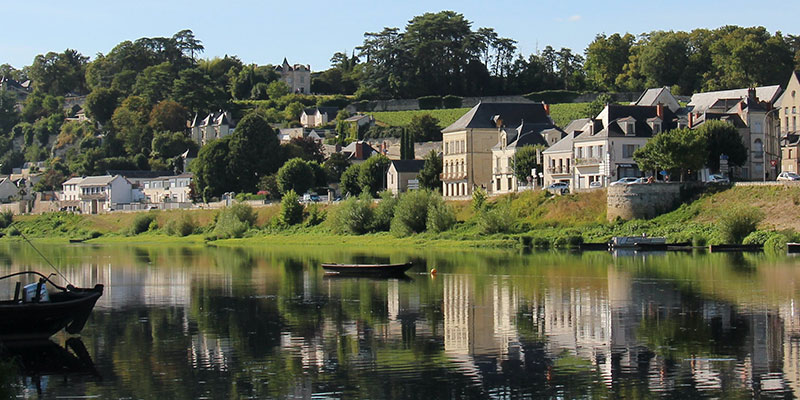We're visiting the historic town of Chinon as part of our tour of the Loire Valley in France.
Driving through the main shopping lane of Chinon's Old Town gives you a quick preview of the lanes in which we'll soon be taking a little walk. It's primarily a pedestrian zone but our tour van has permission to bring us in here and then drop us off – very convenient for us.
.jpg)
The historic center was registered as a National Conservation area in 1968. The Old Town presents an interesting architectural ensemble, especially dating from its time of importance in the Middle Ages and the beginning of the Renaissance when this Loire Valley area was the seat of the king's court.
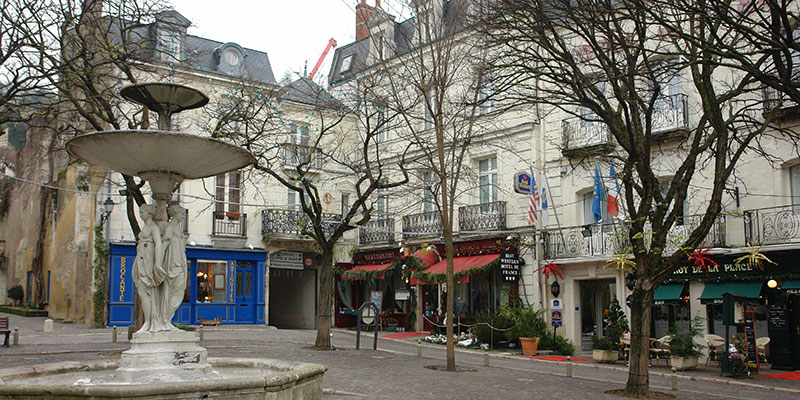
This central place was the only open space during the Middle Ages and so developed in the 18th and 19th centuries into the main town square, sheltered by trees, with outdoor restaurants tables and an excellent small hotel.
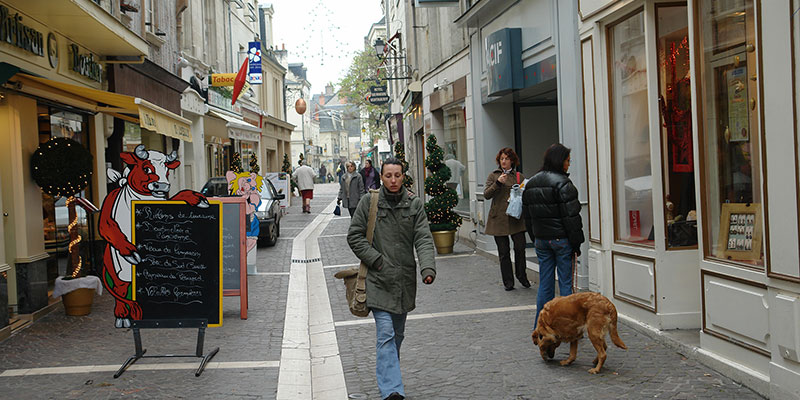
Chinon is a small town and you definitely get that feeling of friendliness and camaraderie as you walk around the streets, especially here in the off-season, we’re in early December. In the summer it's going to be more crowded with tourists of course, but now it's all locals, they are out with their baguettes and saying hello and pushing the babies, it's really a lovely scene.
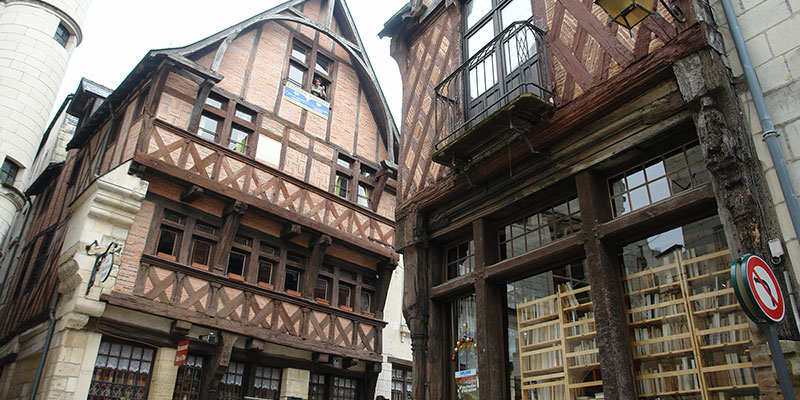
Typical of European old towns, they have managed to preserve the best of the old structures and then renovate them, reutilize them and turn it into a modern and vibrant downtown that everybody can enjoy today. It has an authentic human scale that many modern cities are trying to recapture.
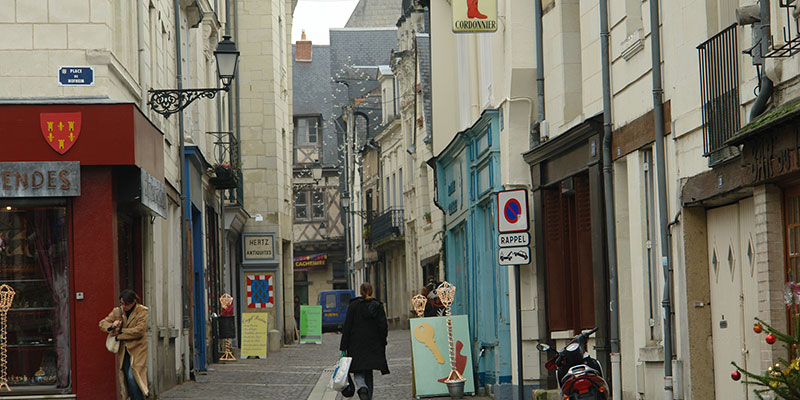
The Old Town developed kind of squeeze in-between the foot of a rocky cliff and the Vienne River on the south, which created a long narrow urban space, with the main streets running parallel to the river.
The most significant event of Chinon's history took place in 1428, when King Charles VII assembled here the Estates General, and Jeanne d'Arc prevailed upon him to march on the city of Orleans, which at that time was besieged by the English.
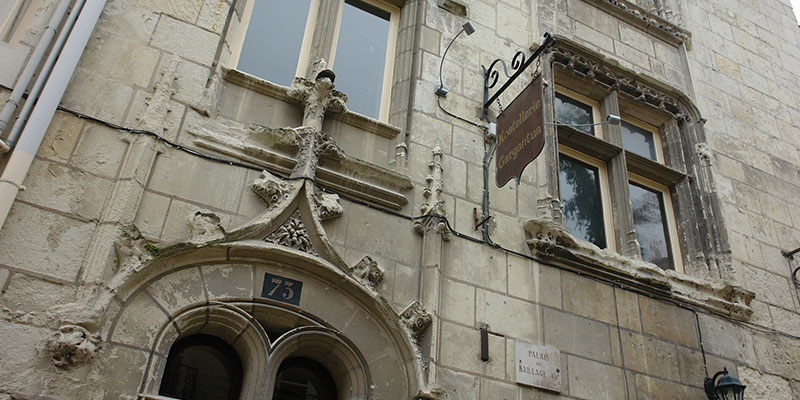
With the men and arms accorded to her, Jeanne d'Arc went on to break the siege of Orleans and open the way for Charles to be crowned. This battle was the turning point of the war with England, leading to the end of the Hundred Years War and helping to establish firm national boundaries of France.
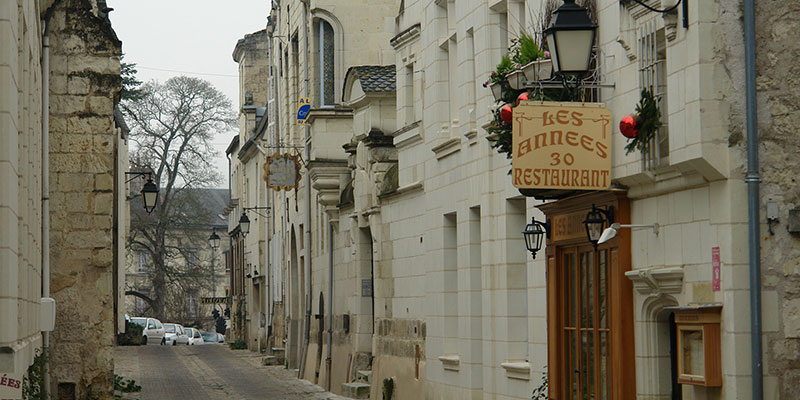
After the sixteenth century, Chinon was no longer a royal residence, and in 1631 it became part of the estates of the Duke of Richelieu, who neglected it and it began to fall apart. The city changed very little up to the Revolution. In the 1820s, however, most of the fortifications were pulled down and the banks of the Vienne River were opened up to the outside.
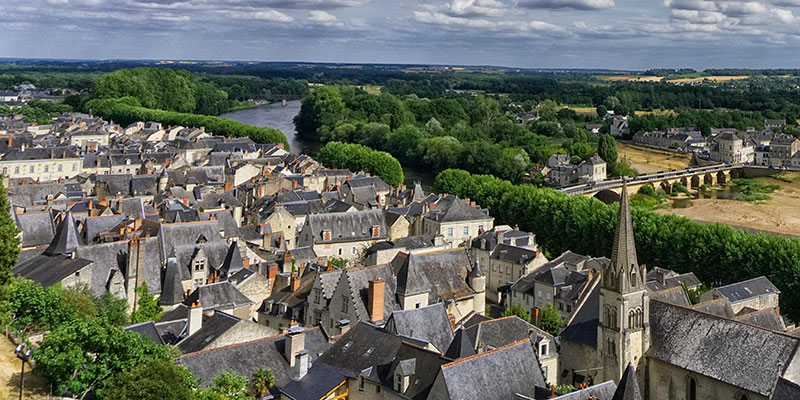
We took a short drive uphill in our tour van and stopped for an overview of the Old Town – a spectacular vista down below, all those slate roofs on top of buildings dating back 400, 500 years old in some cases. There are remains of a large castle up on the hill also overlooking the town. As we leave town in our van tour heading for yet another château we get a look back across the river at the town. 